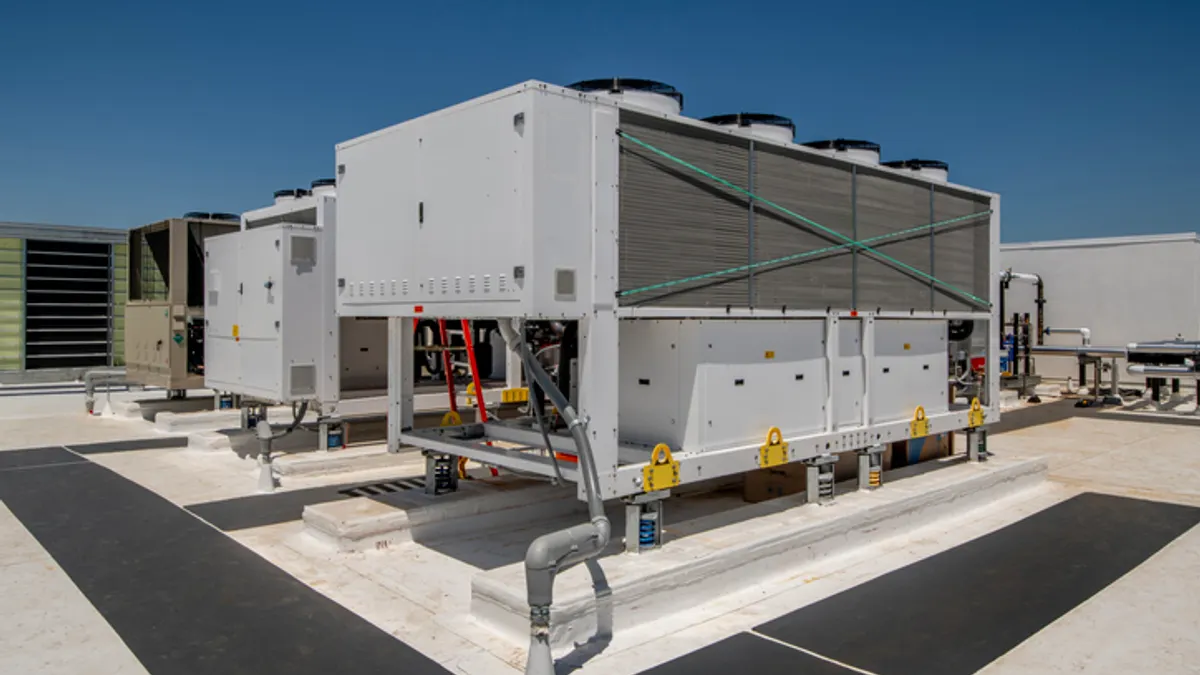Dive Brief:
- Building operators are throwing away money if they oversize their HVAC systems to hedge against soaring temperatures, an analysis shows.
- A high-rise building that had an oversized variable refrigerant flow HVAC system used six times as much electricity to keep it cool throughout the summer of 2023 as a building of equivalent size that had a right-sized VRF system, an analysis by Steven Winter Associates found.
- “HVAC designers understandably want to provide ample heating and cooling capacity,” the analysts said. “But this conservative approach has real world costs.”
Dive Insight:
It’s not uncommon for HVAC designers to over-estimate the load the system will face throughout the year in determining how big its capacity should be.
For their study, Steven Winter Associates analysts conducted their own assessments of how much cooling load capacity would be needed at each building, using ASHRAE standards, and compared their estimates with the estimates made by the HVAC designers.
In the building with the higher cooling costs, the designers had estimated loads 70-75% higher than what the analysts had calculated, while the designers for the building with lower costs had calculated loads closer to what the analysts had.
“Oversizing starts with poor design load calculations,” the analysts said.
The designers for the high cooling-cost building also specified HVAC capacity that was 33% higher than their “already inflated” estimated load, the analysts said. The designers for the lower cooling-cost building specified capacity that was 10% lower than their estimated load.
For the higher cost building, the result was a 240% differential between actual peak loads and what the system was designed for.
“The maximum cooling output was less than half of the designer’s loads for 99.8% of the summer,” the analysts said.
The building kept cool all summer, but so did the other building, even though it was sized at only 90% of peak loads.
“There is no need to inflate design loads or add safety factors,” the analysts said.
Designers should use either ASHRAE or Air Conditioning Contractors of America standards when estimating loads and not hedge against them, they said. “Calculations per ASHRAE or ACCA … accurately predict peak load,” they said.
The analysis was sponsored by the DOE's Office of Energy Efficiency and Renewable Energy.










